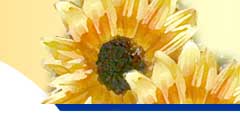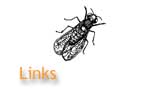



Actinomycetes - A filamentous bacteria that resembles fungi.
Aerobic - A biochemical process occurring in the presence of oxygen.
Anaerobic - A biochemical process occurring in the absence of oxygen. Marked by a foul odor.
Bacteria- Microscopic single-celled organisms lacking a nucleus. They are structured as either rod-shaped, sphere-shaped or spiral-shaped.
Carbohydrate- A compound of carbon, hydrogen and oxygen most of which is formed by green plants and which constitute a major class of animal foods. Three categories of carbohydrates are sugars, starches, and celluloses.
Carbon - An element necessary for the construction of carbohydrates. Represented as "C". Necessary for the support of life. Examples of carbon-rich materials used in a compost pile are leaves, sawdust, wood chips, straw.
Carbon/nitrogen ratio - The proportion of carbon to nitrogen which affects how quickly microorganisms work. The ideal "C/N" ratio is in the range of 25/1 to 35/1.



Centipedes - Long flattened many-segmented predaceous
arthropods. Each body segment bears one pair of legs of which the foremost
pair is modified into poison fangs.
Compost - Organic matter that is undergoing decomposition or has resulted from decomposition.
Cubic yard - The dimensions are 3 feet high by 3 feet deep by 3 feet wide.
Decomposer - An organism that feeds on and breaks down organic materials into simpler chemical compounds.
Decomposition - The process by which organic materials chemically break down into simpler compounds.
Earthworms - Any of a family of numberous hermaphroditic worms that move through the soil.
Elements - Any of more than 100 fundamental substances that consist of atoms of only one kind and that singly or in combination constitute all matter.
Food web- The totality of interacting food chains in an ecological community.
Fungi - Saprophytic and parasitic plants that lack chlorophyll and include molds, rusts, mildews, smuts and mushrooms.
Humus - The end product of composting. Organic material which is completely decomposed.
Inorganic matter - Derived from a non-living source such as rocks, sand and plastic.
Invertebrate - An organism lacking a spinal column.
Mesophilic - Describes bacteria which are active in the temperature range between 40-110 degrees Fahrenheit, but thrive between 70-90 degrees Fahrenheit. Most of the decomposition that takes place in a compost pile is mesophilic.
Microbes - A synonym for microorganisms.
Microorganisms -Microscopically small living things that digest organic material through metabolic activity.
Millipedes - A small crawling animal with a cylindrical segmented body covered with hard integument. Two pairs of legs are attached to each segment. No poisonous fangs.
Mites - Very minute arachnids that have eight leg-like jointed appendages.
Nematodes - Elongated cylindrical worms parasitic in animals or plants or free-living in soil or water.
Nitrogen - An element necessary for the construction of all living tissue. Represented as "N". Examples of nitrogen-rich materials used in a compost pile are food scraps, grass clippings, animal manures.
Nutrients - A substance that provides nourishment.
Organic matter - Derived from or produced through the biological activity of a living thing.
Pathogen - Any organism capable of producing disease or infection. Found in animal waste material, pathogens are killed by the high temperatures (131 degrees Fahrenheit or higher for 3 days) of the composting process.
Primary consumers - Herbivores. Feeding on plant matter.
Protozoa - Unicellular animals which have varied morphology and physiology, and often complex life cycles. Represented in almost every kind of habitat.
Psychrophilic - Describes bacteria which are active in a low temperature range (below 65 degrees Fahrenheit), but thrive around 55 degrees Fahrenheit.
Saprophytic - Obtaining food by absorbing dissolved organic material.
Secondary consumers - Carnivores. Organisms that eat primary consumers.
Sow bugs - A crustacean with a flattened elliptical body often capable of being rolled into a ball. Called also pill bugs.
Springtails - Also known as collembolan. A small primitive wingless arthropod.
Thermophilic - Describes heat-loving bacteria that exist in a temperature range between 104 - 200 degrees Fahrenheit. Their ideal range is 122-131 degrees Fahrenheit.
Home
| Overview | About
| Benefits | Links
Microbes | Setup |
Inside | Activities